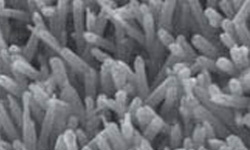Iranian Research Team Presents New Method for Synthesis of Magnesium Oxide Nanoparticles
A research team at Islamic Azad University (Karaj Branch), led by Dr. Seyed Majid Borqeyee, recently reported the successful synthesis of magnesium oxide nanoparticles through a hot wire chemical deposition (HWCVD) method and conducted a comparative study on the characteristics of the prepared samples and the MgO nanoparticles yielded by other conventional techniques.
Needless to discuss, nanoparticles constitute a basic and integral part of nanotechnology. Metal oxide nanoparticles in general and magnesium oxide nanparticles in particular are of special importance, accordingly. Due to its favorable properties including chemical, thermal, electrical and optical (e.g. high thermal stability and melting point, small dielectric constant, etc), MgO has found many applications in a variety of industrial activities.

On the other hand, the HWCVD has gained a good reputation in the synthesis of different metal oxide nanoparticles. The latter encouraged the mentioned researchers to choose the HWCVD as their synthesis technique and despite of the involved complexities in its design, the Iranian researchers have made it to set up this apparatus in the Plasma Physics Center of the Science and Research Branch of Islamic Azad University (located in Tehran).
Subsequent to the construction of the HWCVD experimental setup, the synthesis of many metal oxides, specifically the MgO, nanoparticles was followed. Afterwards, the prepared samples underwent a series of characterization analyses and their properties, for instance the filament temperature as a key parameter, were thoroughly investigated by the research group.
Source:Nanotechnology Now
- 340 reads




